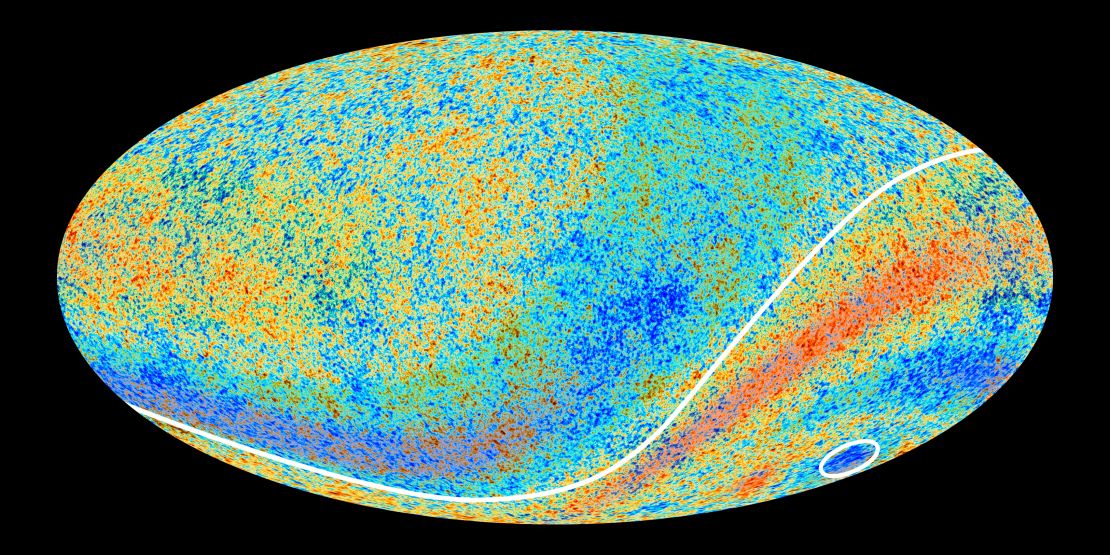Editor’s Note: Don Lincoln is a senior physicist at Fermilab and does research using the Large Hadron Collider. He has written numerous books, including “The Large Hadron Collider: The Extraordinary Story of the Higgs Boson and Other Things That Will Blow Your Mind,” and produces a series of science education videos. In collaboration with the Great Courses company, he recently released a video course about the theory of everything. Follow him on Facebook. The opinions expressed in this commentary are his.
Story highlights
Don Lincoln: Physicists wonder if a newly discovered "Cold Spot" supports the long-shot theory of multiple universes
Discovering that multiverses existed would tell us that not even our universe is special, he says
A recent astronomical observation of a “cold spot” in the universe is stirring the interest of scientists who are intrigued with an exciting and highly speculative theory that there may be more than one universe.
Now before you get incredibly excited about that prospect, I should caution that this particular explanation is a huge long shot and there are more prosaic possible explanations. The idea of multiple universes, or multiverses, is a highly speculative and contentious one, and many experts view it with a very jaundiced eye. (This includes me.)
In 1964, two scientists used a microwave receiver to hear the radio hiss that is the modern remnant of the Big Bang. While the universe after the Big Bang was unimaginably hot, it has cooled over the eons and these measurements showed that the temperature of the universe is about 3 Kelvin (-455 ºF). Further, the temperature is extraordinarily uniform.
However, in 1998, the COBE satellite discovered that the temperature of the universe wasn’t perfectly homogeneous. There were places in the sky that were a little hotter and colder than average. These variations are very small, only about one part in 100,000.
There have been improved measurements of this non-uniformity, with the most recent satellite (called Planck) publishing its measurements in the early part of this decade. These new measurements are much more precise and they support the earlier conclusions of the COBE satellite.
Scientists believe these small variations are actually remnants of subatomic-sized temperature differences that were present at the moment of the Big Bang that are now stretched across the entire universe. And, while that is inarguably an extremely cool idea, it’s not the thing that has scientists’ attention at the moment. There’s another topic that is literally cooler still.
Our current theories can pretty much explain the pattern of cold and hot spots across the sky, except there appears to be an anomaly. There is a spot in the heavens that is unusually cold. Scientists have unimaginatively called it “The Cold Spot.”

At only 150 microkelvins below average, this seems like a very small variation. But it is a much bigger temperature difference and it covers a much larger part of the sky than can be easily explained. There is something unusual going on.
In about 2008, several scientists proposed that this cold spot in the remnant of the Big Bang fireball could perhaps be due to collisions between multiverses. The Cold Spot could be nothing more than a bruise on a particularly large peach.
This is obviously an exciting idea. The possibility of confirming multiverses would vastly overturn mankind’s vision of our place in reality. Copernicus taught us that the Earth wasn’t the center of the universe, while Hubble taught us that not only is the Sun not at the center of universe, the Sun is a simply an ordinary component of a larger galaxy that is but one of billions.
Discovering that multiverses existed would tell us that not even our universe is special. The idea of human exceptionalism would take another blow.
Naturally scientists look critically at these grand ideas. Maybe there is a far more ordinary explanation for the Cold Spot.
One such explanation of the Cold Spot is simply there that there is a void in the cosmos, which is to say a region of the universe with far fewer galaxies than usual. If true, as the primordial light from the Big Bang passes through this region, it loses energy and cools. This effect only occurs if the universe is expanding, but we know that it is, so the proposal is completely reasonable.
A recent study announced on April 12 looked at this region of space to see if it really did have fewer galaxies than expected. The study suggests that there was a small deficit, but not nearly enough to explain the Cold Spot. In short, the obvious answer doesn’t appear to be the right one.
So what does it all mean? Although I’d bet that the void idea is the right one, this is a bet I’d be happy to lose, because I would be lying if I didn’t say that I would love to see someone prove that the Cold Spot was caused by colliding universes.
However, it is a highly improbable outcome. It is far more likely that additional studies will support a more ordinary cause. But the prospect of observing multiverses is an exciting one, so scientists are guaranteed to keep looking at it.
Figuring out what is going on will take a lot more research, and nobody can definitively tell you what the final outcome will be. In the words of the eternally wise Yogi Berra, “It’s hard to make predictions, especially about the future.”



























































